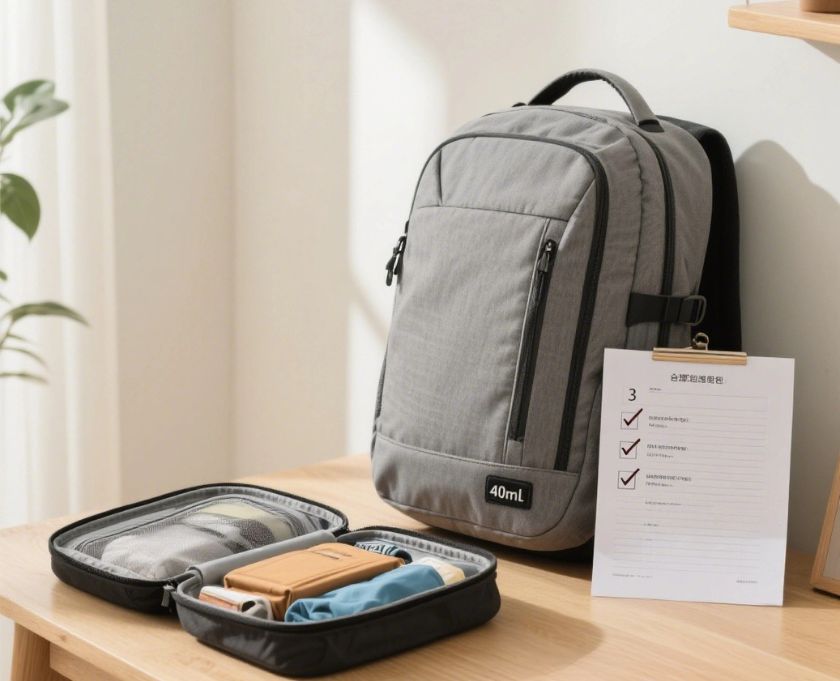Beautiful Plants For Your Interior

Backpacking promises freedom, flexibility, and adventure — but overpacking is one of the most common mistakes travelers make. A heavy, overstuffed backpack can lead to:
- Shoulder and back pain
- Difficulty moving through airports or trails
- Extra airline fees
- Reduced enjoyment of your journey
Learning how to avoid overpacking not only saves your energy but also enhances your overall travel experience. In this comprehensive guide, we’ll explore minimalist travel strategies, efficient packing tips, and must-avoid mistakes so you can travel light without sacrificing comfort.
Why Overpacking Happens
1. Fear of “What Ifs”
- Packing extra clothes, gadgets, or toiletries “just in case.”
- Leads to unnecessary bulk.
2. Lack of Planning
- No clear itinerary → uncertain wardrobe needs.
- Result: carrying too much.
3. Emotional Attachment
- Travelers often bring comfort items that aren’t essential.
4. Misjudging Climate & Culture
- Overpacking coats for warm destinations or too many shoes for casual trips.
Principles of Smart Backpacking
Rule of the Thirds
- One-third for clothing.
- One-third for gear (electronics, travel tools).
- One-third for essentials (documents, toiletries, first aid).
1-2-3 Rule for Clothing
- 1 hat, 2 pairs of shoes, 3 outfits.
- Wash and reuse instead of overpacking.
Prioritize Multi-Use Items
- Quick-dry towel = beach, shower, picnic.
- Hiking shoes = trail + casual wear.
Weight Distribution
- Keep your pack under 20% of body weight.
- Example: If you weigh 70kg, max pack weight ≈ 14kg.
Step-by-Step Guide to Avoid Overpacking
Step 1: Start with the Right Backpack Size
- Choosing a 40L–50L pack limits unnecessary items.
- Larger packs invite clutter.
Step 2: Make a Packing Checklist
- List essentials (passport, charger, water bottle).
- Strike out duplicates.
Step 3: Choose Versatile Clothing
- Neutral colors = mix and match.
- Quick-dry fabrics save space & washing time.
Step 4: Apply the Rolling Method
- Roll clothes to maximize space.
- Use packing cubes for organization.
Step 5: Limit Toiletries
- Use travel-size containers.
- Buy locally if needed.
Step 6: Do a Trial Pack
- Pack everything, then remove 20%.
- If your bag feels heavy at home, it will feel twice as heavy on the road.
Minimalist Backpacking Checklist
| Category | Essentials Only | What to Skip |
|---|---|---|
| Clothing | 3 shirts, 2 pants, 1 jacket, 1 pair hiking shoes, 1 pair sandals | 5+ pairs of shoes, heavy jeans |
| Toiletries | Travel-size soap, toothbrush, razor | Full-size shampoo, hair dryer |
| Electronics | Phone, charger, power bank | Multiple cameras, laptops |
| Gear | Reusable water bottle, compact towel | Large cookware sets |
| Documents | Passport, travel insurance | Extra paper copies (store digital) |
Pro Tips from Experienced Backpackers
- Adopt layering instead of bulky jackets.
- Pack items you can buy or borrow at destination.
- Stick to a one-bag rule.
- Practice capsule wardrobe: fewer clothes, more combinations.
Common Mistakes to Avoid
- Packing “just in case” items.
- Ignoring climate research.
- Carrying sentimental objects.
- Bringing too many toiletries.
FAQ — Avoiding Overpacking
Q1: What is the ideal backpack size for a 2-week trip?
A1: 40–50L is usually enough. Larger bags encourage overpacking.
Q2: How do I deal with laundry while traveling?
A2: Use quick-dry fabrics and wash clothes in sinks or laundromats.
Q3: Should I pack extra shoes?
A3: One versatile pair + sandals/slippers is usually enough.
Q4: How do I handle unexpected weather?
A4: Layer clothing and pack a lightweight rain jacket instead of heavy coats.
Conclusion
Avoiding overpacking is about strategy, not sacrifice. By packing smart, you gain:
- Freedom of movement;
- Reduced stress;
- Lower costs;
- A more enjoyable backpacking adventure.